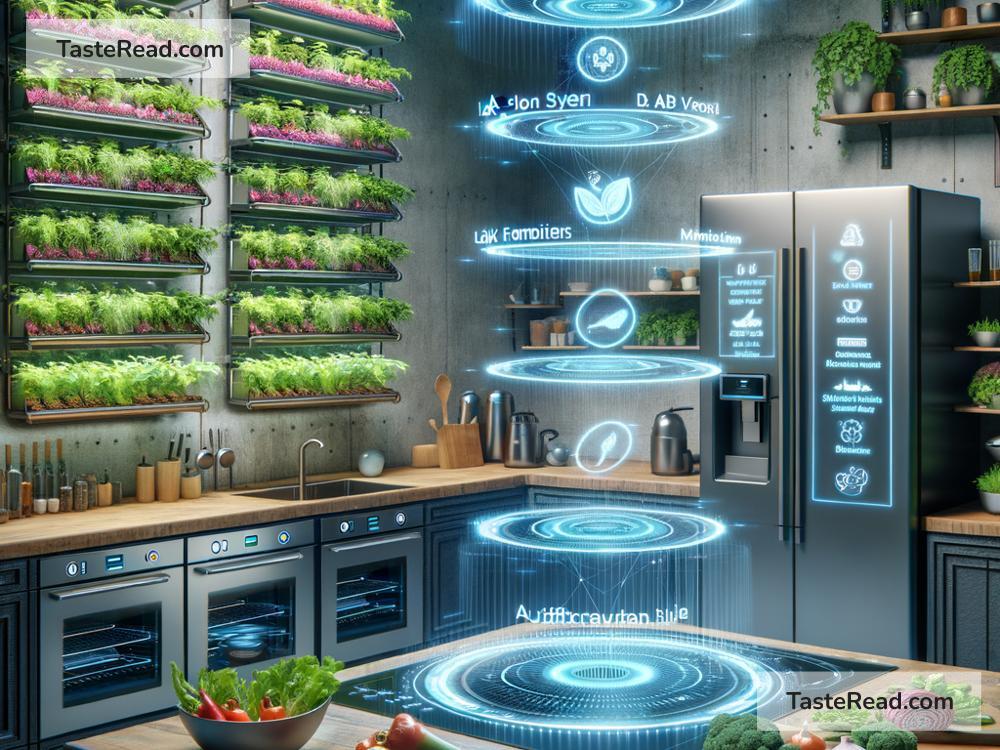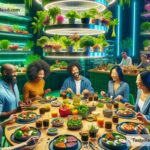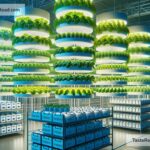The Future of Food and Digital Transformation: A Simple Look Into What’s Next
Food is a big part of our daily lives. From the meals we cook in our kitchens to the snacks we grab on the go, food keeps us healthy, happy, and connected. But what if the way we grow, produce, and eat food is about to change forever? Thanks to digital transformation, the future of food may look very different — and exciting.
Let’s explore how technology is reshaping the food industry and creating new opportunities for how we eat and live.
What is Digital Transformation?
Before diving into food, let’s quickly explain digital transformation. Digital transformation is the use of modern technology, like computers, software, and the Internet, to make businesses better, faster, and smarter. It helps industries improve their work, save costs, and create new ways to serve customers.
In the food industry, digital transformation touches everything — from farming and food processing to delivery and customer service. With smart tools and data, companies can grow more food, reduce waste, and make healthier food available to more people.
The Future of Farming: Smart Agriculture
Have you ever heard of “smart farming”? It’s a big part of digital transformation in food production. Farmers are using technology like drones, sensors, and artificial intelligence (AI) to make farming more efficient.
For example:
– Drones can fly over fields to scan crops for pests or diseases, reducing the need for harmful chemicals.
– Sensors can monitor soil moisture, helping farmers know when to water their plants — which saves water and protects the environment.
– AI tools can predict weather patterns and plan planting schedules to get the best results.
Even vertical farming, where crops grow in indoor facilities stacked on top of each other, is powered by technology. These farms use special lights and automated systems to grow food with less land and water. This could be a big solution in cities where farmland is limited.
Lab-Grown Meat and Plant-Based Diets
Another exciting thing happening in the future of food is lab-grown meat. Scientists can now create real meat in labs using animal cells, without raising and slaughtering animals. This technology could reduce greenhouse gases and save resources that traditional farming uses. Lab-grown meat isn’t in every grocery store yet, but it could be common in the near future.
Similarly, plant-based diets are rising. Many companies are using technology to create “meat alternatives” like burgers made from beans, peas, or soy that taste and feel like beef. These products are already popular among people trying to eat healthier or reduce their environmental impact.
Smart Packaging and Sustainability
You’ve probably seen food packages that share information like calorie counts or ingredients. But in the future, packaging will get even smarter. Imagine scanning a QR code on a food package with your phone to learn where the food was grown, its freshness, and even recipes for cooking it.
Smart packaging can also help reduce food waste. For example, packaging with sensors might tell you exactly when the food inside is about to expire, so you can use it before it goes bad.
And speaking of waste — sustainability is a huge focus for food companies. Many are using digital tools to track where waste happens (like uneaten food or packaging) and find ways to recycle or reuse it. Some companies are even turning food waste into new products, like compost or renewable energy.
Food Delivery Made Smarter
Remember the days when you had to call a restaurant to order food? Now, apps like Uber Eats and DoorDash make it easier for people to get meals delivered to their doorstep. Technology is making food delivery smarter and faster than ever.
In fact, robots may soon deliver food! Some cities are already testing delivery robots or drones that can bring meals directly to homes. This could reduce costs for restaurants and improve service for customers.
Additionally, digital tools now allow people to customize meals to fit their dietary needs. Whether you’re gluten-free, vegan, or tracking calories, it’s becoming easier to order food designed just for you.
Healthier, Personalized Food Choices
One of the coolest trends in the future of food is personalization. Imagine a world where you can eat meals tailored to your exact health needs, fitness goals, or even genetic makeup. Digital tools, like apps and wearable devices, are making this possible.
For instance:
– People can track their nutrition and fitness goals through mobile apps connected to meal planners.
– Some companies are working on DNA-based diets — creating food plans based on how your body processes nutrients.
This approach makes eating healthier easier and more fun!
Challenges on the Horizon
Of course, the digital transformation of food is not without challenges. Some technologies are expensive and difficult for small farmers or businesses to adopt. Others raise questions about privacy, like who owns the data collected about food preferences and habits.
Additionally, creating tech-based food, like lab-grown meat, requires clear regulations to ensure safety, fairness, and transparency. But with planning and collaboration, these challenges can be solved.
Conclusion: A Food Revolution Is Happening
The future of food is exciting and full of possibilities. With the help of digital technology, we’re moving toward smarter farming, healthier diets, and more sustainable systems. From lab-grown burgers to delivery robots, the way we grow, package, and eat food is changing — for the better.
As digital transformation continues, everyone in the food industry is working to make our lives easier, more productive, and healthier. The food revolution isn’t just about what’s on your plate today. It’s about how we’ll feed the world in the future — and that future looks brighter than ever.


